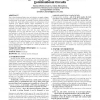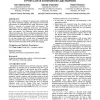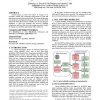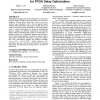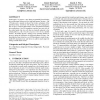DAC
2006
ACM
15 years 12 days ago
2006
ACM
Abstracting with credit is permitted. To copy otherwise, to republish, to post on servers, to redistribute to lists, or to use any component of this work in other works requires pr...
DAC
2006
ACM
15 years 12 days ago
2006
ACM
Due to the shrinking of feature size and reduction in supply voltages, nanoscale circuits have become more susceptible to radiation induced transient faults. In this paper, we pre...
DAC
2006
ACM
15 years 12 days ago
2006
ACM
This paper presents a technique for preprocessing combinational logic before technology mapping. The technique is based on the representation of combinational logic using And-Inve...
DAC
2006
ACM
15 years 12 days ago
2006
ACM
Transistor leakage is poised to become the dominant source of power dissipation in digital systems, and reconfigurable devices are not immune to this problem. Modern FPGAs already...
DAC
2006
ACM
15 years 12 days ago
2006
ACM
DAC
2006
ACM
15 years 12 days ago
2006
ACM
Three-dimensional (3-D) integrated circuits have emerged as promising candidates to overcome the interconnect bottlenecks of nanometer scale designs. While they offer several othe...
DAC
2006
ACM
15 years 12 days ago
2006
ACM
Recent progress in EDA tools allows IC designs to be accurately verified with consequent improvements in yield and performance through reduced guard bands. This paper will present...
DAC
2006
ACM
15 years 12 days ago
2006
ACM
In this paper we present a new efficient algorithm for retiming sequential circuits with edge-triggered registers under both setup and hold constraints. Compared with the previous...
DAC
2006
ACM
15 years 12 days ago
2006
ACM
Both technology mapping and circuit clustering have a large impact on FPGA designs in terms of circuit performance, area, and power dissipation. Existing FPGA design flows carry o...
DAC
2006
ACM
15 years 12 days ago
2006
ACM
In this paper, we propose a new linear programming based timing driven placement framework for high performance designs. Our LP framework is mainly net-based, but it takes advanta...

